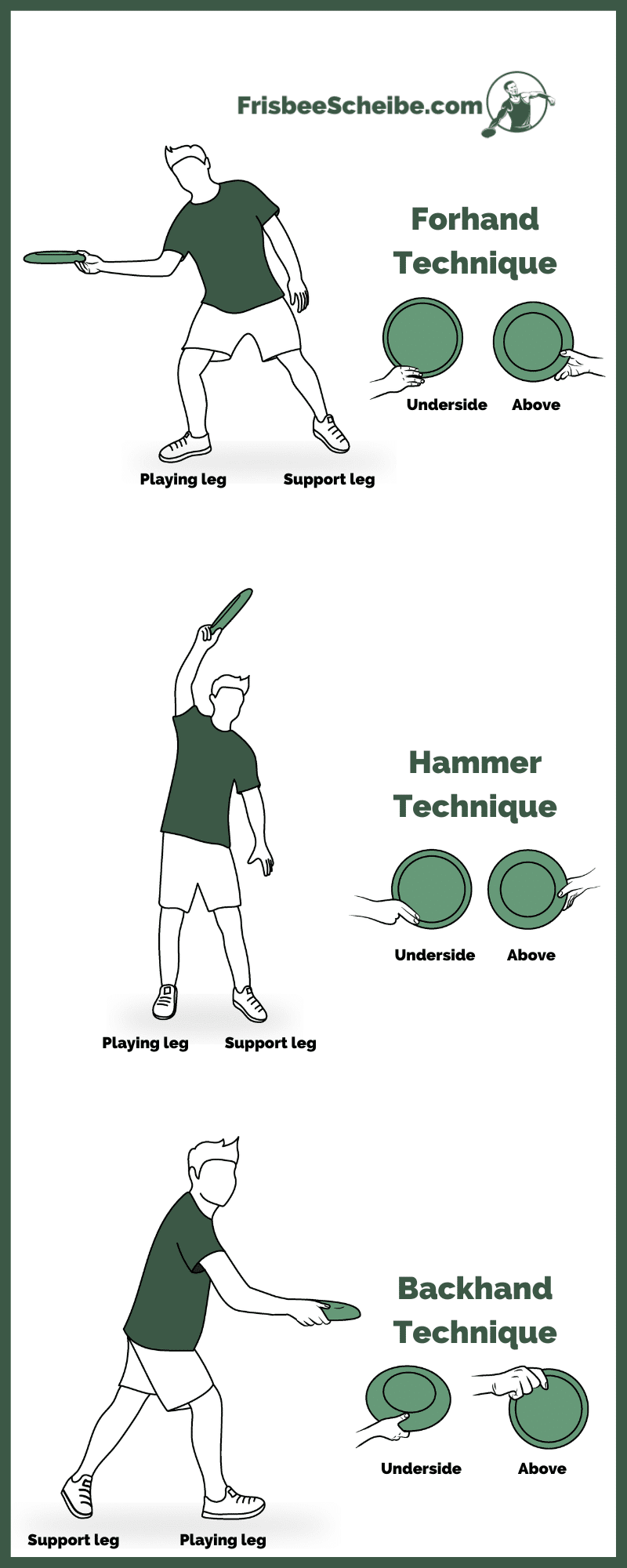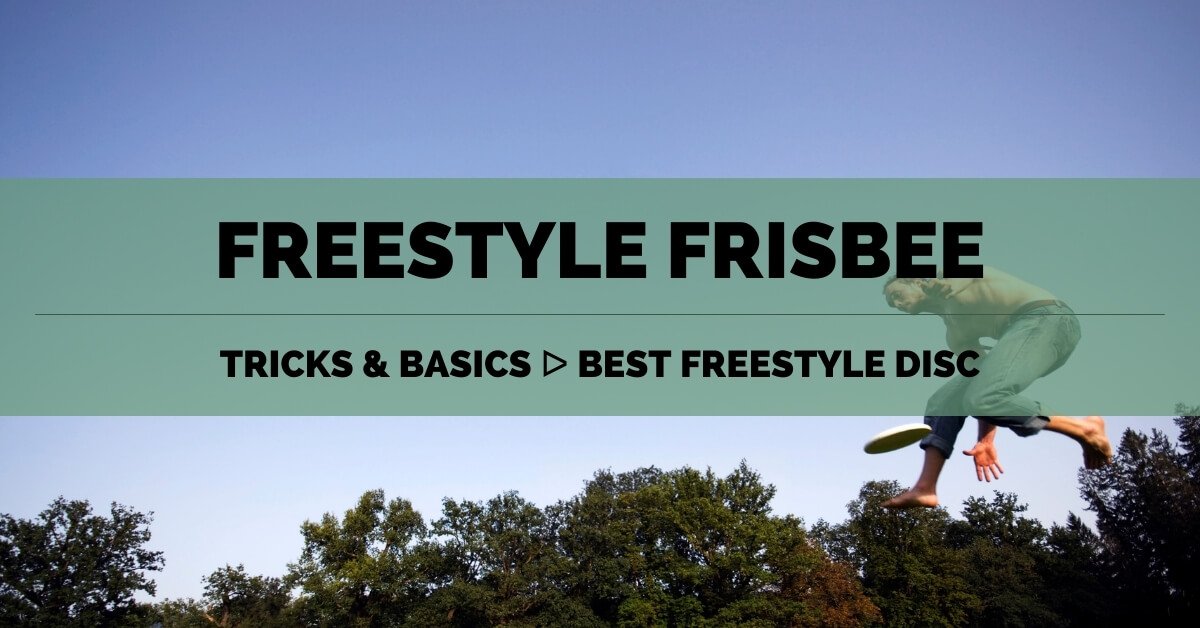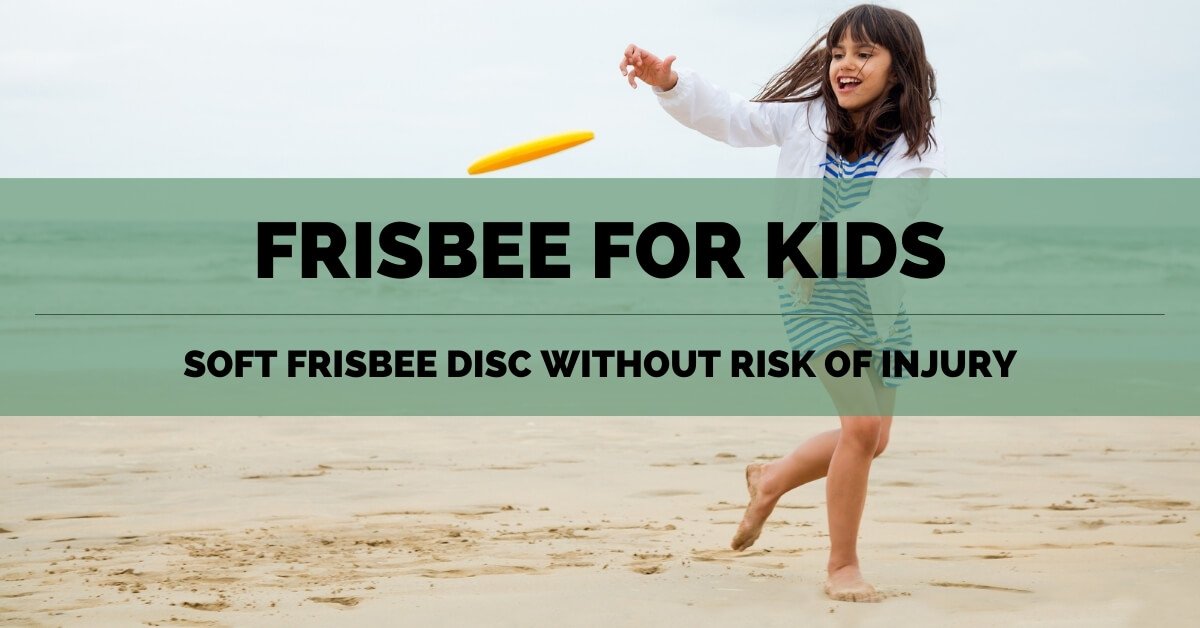Ultimate Frisbee. Sounds unique – and it really is. After all, the Ultimate Frisbee rules guarantee that this variant of the disc game is the most self-responsible sport in the world. But that’s not all: not only fair play is required here, but also brains, stamina and reaction speed. At the same time, there is a lot of fun and variety. A good reason to take a closer look at this Frisbee game.
What do you need to play Ultimate Frisbee?
Teams
The strength of each team is around 5 to 7 people. On the pitch, seven players on each side (five in the hall) can actively take part in the action. However, since as many players as desired may be replaced after a point, it is of course advisable to have enough people on the substitutes’ bench. The exact composition of the teams depends on the division and the question of Open, Mixed or Ladies. The Open and Mixed Divisions are decided by the fact that in the Mixed Division the male-to-female ratio (3 to 4 or vice versa) is clearly specified. However, there is no provision for pure men’s teams – so women are free to choose whether they want to play mixed or open.
Venues
Roughly speaking, the playing areas can be divided into three different options.
- First, the outdoor fields (which I will describe in more detail in a separate section), indoor halls and the beaches.
- Second, the indoor option is usually a basketball or handball court for winter use. The smaller size allows for an adjustment of the number of players (mostly 5 against 5), the stall count (reduction to 8) and the throwing rules. In addition, the game is much faster because there is no rain or wind. As a result, other tactical moves may become more important. This is also due to the fact that the continuous mode is popular outside official tournaments. Either way, the basic idea remains the same – but it is worthwhile to determine indoor and outdoor champions separately. Which is the case in Germany at least.
- Last but not least: Beach Ultimate is also played 5 against 5. The field comprises two end zones which are 328 feet long, a main field of 147,64 feet and a width of 82 feet. In addition, clearly recognisable guy lines form the boundaries. Within the Ultimate Association, the Beach Ultimate Lovers Association (also known as BULA) has existed since 2001. Since 2004, it has been organising European and World Championships every four years (with an adjusted rotation in 2017) according to its own rules.
The most important accessory – the disc
If you want to play according to the official Ultimate Frisbee rules,the right disc* is a must. It has a weight of 175 Gram . These features, combined with the right material – ideally bio-plastic – and flight stabilisation grooves on the top of the disc, ensure that the disc flies quite stably. As a result, beginners can throw more than 164 feet quite quickly with a little practice. And professionals often crack the mark of 328 feet.
What does appropriate clothing for Ultimate look like?
You don’t need any special clothing for Ultimate Frisbee – but you can get it 😉 HERE*. However, it is best to wear breathable trousers and shirts that offer you great freedom of movement. In addition, various advanced players also use gloves* that are precisely designed for Ultimate Frisbee. These have a good grip and therefore have a positive effect on throwing and catching. But it’s not as if you’d be played into the ground without them.
- The world standard for the sport of Ultimate
- Official and exclusive disc of the USA Ultimate Championship Series since 1991.
- 175 grams
How do the Ultimate Frisbee rules work?
The elementary basis of Ultimate Frisbee are the…
10 basic rules
Of course, there are even more explicit variations. But for a first overview, the short version should suffice.
Spirit of the Game
Or to put it briefly: A sporting fight, but with absolutely fair means. Of course, the aim is to score points. But respect for the opponent, the fun of the game and the other rules must never be lost.
Playing field
Since an Ultimate Frisbee field is as big as a football field (328 feet long, 121,4 feet wide), you should have a certain basic level of fitness. In addition, the field is divided into two 18-metre deep end zones and a main field of 210 feet in a 1-3-1 ratio.
Start of the game
At the start of the game, the teams line up at the baseline. The throw-off is done by the defending team passing the disc to the attackers.
Das Video wird von Youtube eingebettet. Es gelten die Datenschutzerklärungen von Google.
Movement of the disc
The following Ultimate Frisbee rules apply to disc movement:
- The throwers are free to throw in the direction of the field.
- There is no running with the disc. Therefore, a player must determine his/her footing as quickly as possible after the catch. Afterwards, only a star step (you probably know this from basketball) is allowed.
- After catching the Frisbee, the disc must be passed within the next ten seconds. The stall count, the loud counting of the person throwing the disc by the marker (defender), only takes place when the marker has entered the 3-metre radius of the thrower.
Scoring a point
A point is scored when an attacking player in the opponent’s end zone catches a pass from a player in the game. After a point has been scored, the other team must take over the other side of the field.
Disc change
This occurs when a pass cannot be caught. Either because the disc lands out of bounds, touches the ground or because the opposing team intercepts it. After that, the previous defenders can switch to the offensive without further ado.
Substitution
A substitution is always allowed after a point has been scored or an injury has occurred.
Physical contact
No physical contact is allowed between players. All players must be aware of this. The obstruction of the defence by an attacking player as in basketball is also forbidden (“pick”). In principle, any physical contact is a foul.
Foul play
Touching an opponent counts as a foul, which is reported by the fouled person by calling “foul”. When the disc is lost, there is a stoppage of play. This is followed by a “check” and a continuation of the game. If the fouling person does not agree to the foul call, the attacking team repeats the last pass.
Personal responsibility
Without an ‘extra referee’, the players themselves must ensure that fouls or line infringements are dealt with fairly.
Ultimate Frisbee Field Size
According to official rules, the outdoor Ultimate Frisbee pitch is 328 feet long and 121,4 feet wide. This makes it about the size of a football field. A special feature, however, are the two 59-feet-deep end zones, which thus limit the main playing field to 210 feet. Also worth mentioning are the two brick markers. They are located 59 feet from the border between the main field and the end zone towards the inside of the main field and are halfway up the pitch, i.e. 60,7 feet high. If necessary (with a smaller number of players), it is possible to make the pitch smaller. In this case, however, you have to make sure that the proportions of the main and end zones are still 3/5 and 1/5 respectively. For the delimitation of the playing field, e.g. a flutter tape or a much cheaper marker plate* is suitable.
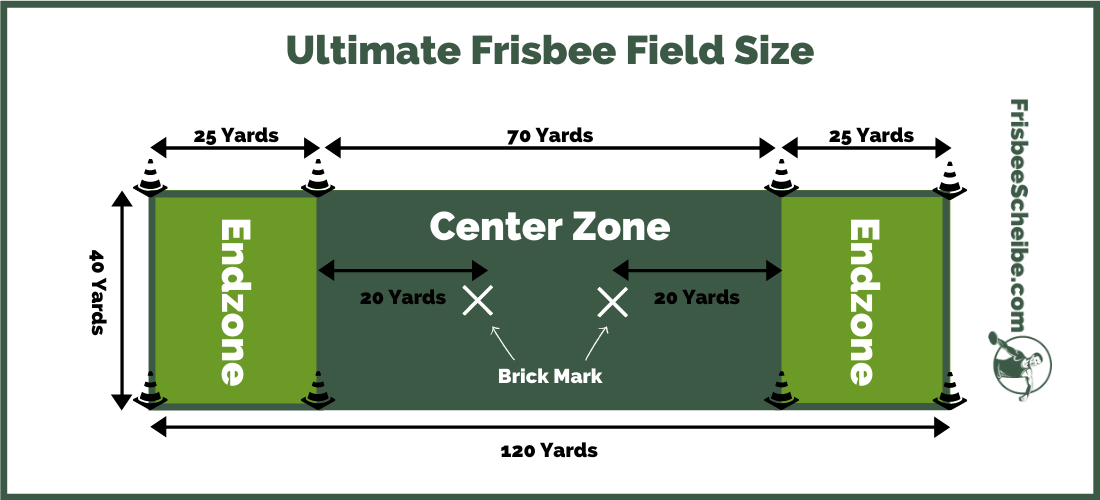
How long does an Ultimate Frisbee game last?
An Ultimate Frisbee game lasts until 13 or 15 points have been scored, depending on the agreement, and rarely 17. Alternatively, a timed game is also possible. In this case, two times 25 minutes is a popular duration for a classic field game. In addition, there is a maximum time limit of 100 minutes and a break of seven minutes. This occurs when a team has scored eight points.
Ultimate Frisbee Throwing & Catching Techniques
There are three main throwing techniques in Ultimate Frisbee.
Backhand throw:
This is also called backhand. First you grip the disc with three fingers plus your thumb, with your index finger on the edge of the disc. Then place your supporting leg, which stays in place. With a star step, step out with the active leg and swing the Frisbee past your body with your arm. Make sure your arm is at chest level throughout the movement from back to front. The underside of the disc should also be facing downwards. Give the disc a rotation with your wrist at the end of the throwing motion. In this way, the curve of a right-handed throw will ultimately be a left-handed curve; for left-handers it is the other way round.
Forehand (sidearm throw):
The forehand throw is also called sidearm. It is ideal to let the disc describe a right-hand curve (right-hand throw). To do this, first pick up the disc in a v-shape with your index and middle fingers. Alternatively, you can hold it closed; just see how you like it better. Your thumb rests on the top while your ring and little finger stabilise the disc. The step position is basically the same as for the backhand. However, you should set the star step outwards. Pull the disc from the back to the front at waist level and gradually straighten your arm, which is bent at first. You can also use your wrist to rotate the disc at the last moment of the throw.
Upsidedown throw
A real overhead! Grasp the disc exactly as in the forehand throw. Now take your arm with the disc upwards and point your upper body straight towards the target. As with a slam throw, pull your arm over your head and release the disc when the arm angle is about 45°. You can also rotate the disc with your wrist.
Catching techniques
There are three main catching methods available to you.
- Sandwich catch: As the name suggests, the disc is enclosed by your two hands from above and below, just like the topping of the sandwich.
- Both hands on the edge: In this variation you also catch the disc with both hands. This time, however, your thumbs are on the top of the disc and all the other fingers are on the bottom.
- One-handed on the rim: As with the two-handed catch, but with only one hand.

Ultimate Frisbee at school
Why play this Frisbee variant at school? It’s simple!
Ultimate Frisbee…
- requires no more special equipment than a fairly affordable disc. No extra sausages are needed in terms of sportswear either.
- can be played on a wide variety of playing fields. Whether on the football pitch in summer or on the basketball or handball court in winter with an adapted team size. Ultimate always goes!
- is fun for pupils of all ages. In particular, the fact that the technique and rules are not particularly complicated increases motivation.
- promotes coordination, tactical understanding and the idea of fair play. Win-win-win.
- is not particularly physical and therefore less likely to cause injury than other team sports. This is a fact that can whet the appetite of more reserved pupils for team play. However, a certain level of fitness is a prerequisite, because the game simply involves a lot of position changes.
- 5-pack of discs
- 175 grams and measuring 10.75 inches in diameter
- absolute highest quality
Das Video wird von Youtube eingebettet. Es gelten die Datenschutzerklärungen von Google.
Exercises for Ultimate Frisbee
Ultimate Frisbee is about stamina and the right throwing and catching technique as well as recognising the current game situation and reaction speed. For this reason, it is worthwhile to train the associated aspects with appropriate exercises. As the range of exercises is very wide, here are just a few examples to help you play according to the official Ultimate Frisbee rules.
Warm-up
What is trained?
- Throwing technique
- Star step technique
- Keeping track of the throwers when team members run into each other.
What do you need for the exercise?
- A playing field of about 32,8 x 32,8 feet (for one group, more fields if there are more groups)
- a disc
- and a group of 4 to 6 players (ideally 3 or more groups).
How does the exercise work?
- The group members decide on the order in which they want to play.
- Everyone runs in sequence
- Player 1 is the first thrower, stops, makes one or two star steps and passes to player 2.
- The game continues like this, but in the course of time two other groups are added to the pitch.
- Further adjustment after a few minutes: one team becomes the opposing team with the aim of knocking down the discs of the other teams.
Be faster than the disc
What is trained?
- Throwing technique
- Star step technique
What do you need for the exercise?
- A disc
- several players (depending on the number of participants, form several groups with one disc each)
How does the exercise work?
- The players line up in a circle
- Person 1 passes clockwise to person 2 and then runs counter-clockwise around the group.
- The other group members pass the disc as quickly as possible.
- Aim of the exercise: Person 1 must be in their old place before the disc arrives there.
Double run
What is trained?
- Throwing technique
- Throwing at moving teammates
What do you need for the exercise?
- Two players
- One disc
How does the exercise work?
- The players line up a few feet apart and walk forward parallel to each other.
- They pass the disc back and forth to each other.
- Important: Whoever receives the disc and wants to pass it must stop after receiving the disc!
Relay race
What is trained?
- Throwing at moving teammates
- Speed
What do you need for the exercise?
- Several games (split into two or more groups)
- One disc per team
How does the exercise work?
- The members of a group line up in a row.
- the first person runs forward as fast as possible and spontaneously changes direction before receiving a pass from the second person.
- person 1 passes back to person 3, who passes the sprinting person 2, and moves quickly back to the end of the line
- The game continues until everyone is back in line – the team that gets through first wins.
King’s box
What is trained?
- Throwing technique
- Catching technique
- Situation overview
What do you need for the exercise?
- Players for two teams
- one disc
- two boxes
How does the exercise work?
- First, a playing field is determined, a box is placed in each ‘end zone’; a person from team 2 positions him/herself at box 1 and vice versa.
- the teams now play on opposite sides
- if the person from team 1 receives a pass at the box and is able to catch it, a point is awarded
- then another person from the same team can go to the box and team 2 gets the Frisbee for their attack.
4 against 2 squared
Good for implementing the Ultimate Frisbee rules under somewhat more complex conditions.
What is trained?
- Star step combined with
- Throwing under pressure and
- Throwing at moving teammates
What do you need for the exercise?
- Six players (one team of 4 and one team of 2)
- A disc
- a square playing field (about 49,2 x 49,2 feet)
How does the exercise work?
- The team with the 4 players is the attacking team and scores a point after 5 passes are successfully passed (caught) in a row.
- The two defenders try to intercept or hit the disc.
- alternatively, they make sure that the disc falls to the ground without being caught.
- Additional difficulty: the respective throwers of the attacking team are counted by the defenders (markers) and have only a limited time for their passes.
3 against 3 with overview
What is trained?
- Throwing at moving teammates
- Throwing under pressure
- Situational awareness
- spatial awareness
- Alternative passing options
- Deception of the opponent
- Observation of the opponent (1-to-1 man-to-man defence)
What do you need for the exercise?
- Two teams with three players each (more teams are of course no problem, but need more fields and discs or have to play alternately)
- one disc
- a playing field with an area of about 65,6 x 49,2 feet
- In each of the four corners, there is an area marked by hoops, boxes, etc. to indicate where the points are to be scored – make sure that these markings can still be played around.
How does the exercise work?
- One team attacks, the other defends (as with the king’s box)
- additional challenges: no zone defence, but 1:1 between thrower and marker, whereby the person throwing must not be touched
- Trick behind it, which should become clear to the players over time: Passes to score should be made to the corners of the end zone if possible.
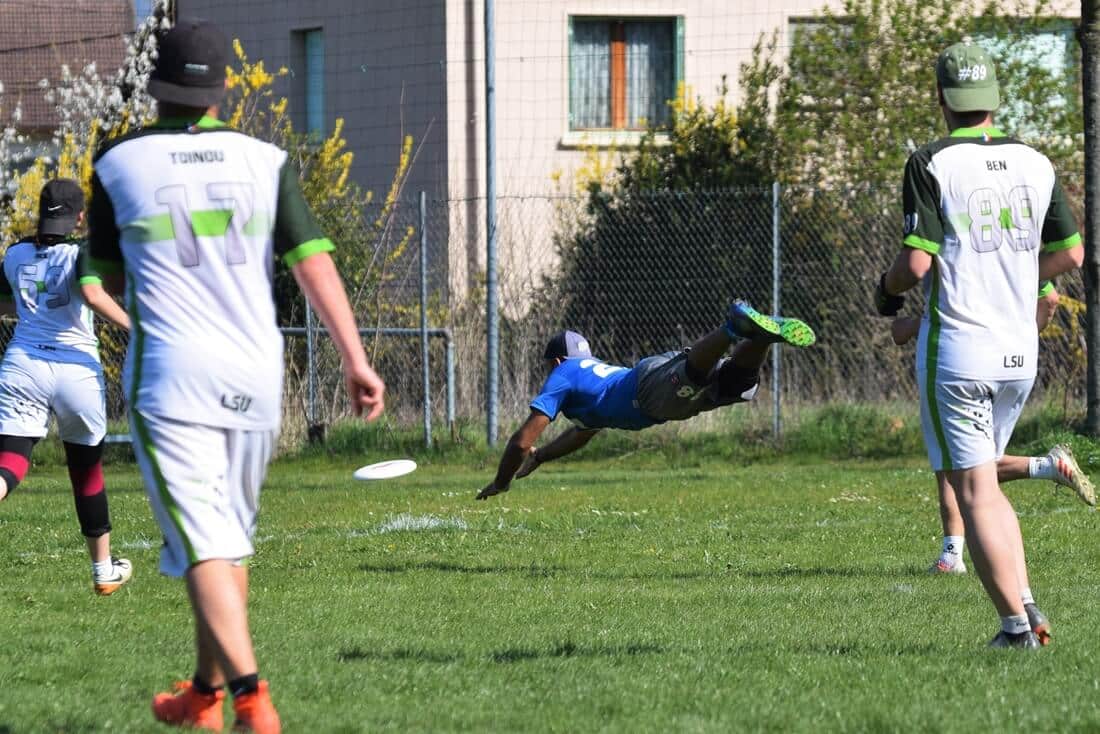
Ultimate Frisbee Tactics
In order to score points effectively or to prevent the attacking teams from scoring, there are some tricks of the trade. For the offensive as well as for the defensive there are different game strategies available, of which I would like to briefly outline four (2 x offensive, 2 x defensive). If you want to know more about how they work in detail, there is, of course, more information available.
Offensive
Stack
The stack is used to create spaces for incisive players. To do this, all attackers line up centrally in the main playing area so that they are parallel to the sideline. The person from the attacking team who has the disc stands a good 49,2 feet away from the handler (player at the head of the stack).
Then the distance shortens to about 16,4 feet from the handler to the mids (in the middle of the line) and longs (at the end of the line). Now a cut is run by the handler to one of the two free sides. If he receives the disc, his successor runs into a corresponding position so that the disc can be passed on and on and finally arrives in the end zone to score. If the free run away from the centre is not successful, a return into the stack is an option to free up the space. However, it does not have to be the old position in the stack – lining up at the end of the line-up can also make sense.
Advantages of the stack: It is easy to learn. In addition, it offers the possibility to take a short break in between and to get a new overview of the situation.
Zone Offence
If the opposing team plays a zone defence and a stack is therefore rather unfavourable, the offence must be aligned to it. One way to do this is to have three handlers play as many swing and dump passes as possible. Two poppers then have the chance to run into the holes in the defence (= the free spaces) and receive the passes there. The two wings on the wings also offer themselves as play-off stations.
Advantages of the zone offence: The zone offence allows much more variability than the stack and can therefore be very surprising. However, the players already need practice with very complex situations and must be quite fit and spry with short sprints. After all, they are always on the move.
Defensive
Man-to-man defence
This is the easiest defence to organise. Here, a pair is formed – i.e. a defending person is placed directly opposite an attacking person before the throw-off. In this variant, the defenders also stay with ‘their’ attackers during the rest of the game. It should be noted, however, that the handler (person with the disc) has a ‘protection zone’ with a diameter of 9,84 feet around him/her, where only one defender is allowed to stand. But: If another attacker runs into this circle, the corresponding defender can run into it.
Advantages of man-to-man defence: Easy to learn and very effective when played correctly. However, the defenders must be fit and, above all, attentive.
Zone defence
Zone defence is not about defending a specific opponent, but a specific area. This means that short backwards or sideways passes by the attackers remain playable, but the upward movement is stalled. The provocation of the handlers during the cross passes can lead to additional mistakes on their side, which the defenders can exploit. Popular tactics here are the cup and the junk zone.
Advantages of the zone defence: It forces the attackers to play in a rather energy-consuming way. In return, however, the defenders must be able to quickly anticipate and respond to many possible and then real attacking options.
Positions
Wait a minute! Handler? Popper? Wings? What does all this mean? It’s simple: depending on whether a team is on the offensive or defensive, the players assume different positions with different tasks. Here is a brief overview:
Offence:
- Handler: The handlers are usually very experienced players who have the appropriate throwing and catching skills. They try to distribute the discs in such a way that they reach the cutters who are running free, which provides additional space.
- Cutter: They are the counterpart to the handler. Once the cut has worked (ideally including space gain), the cutter passes back to the handler and tries again to run free in the field. The cutters can be further divided into players in the central field (poppers) and on the outer wings (wings).
Defensive:
Here it depends on the way of defending. In man-to-man defence it is clear that each defender (marker) takes care of one attacker – the much talked about pairing. In zone defence, on the other hand, the markers can also form small groups. For example…
- in a 3-cup (covers the handlers),
- as popper-stoppers,
- as wings
- or as Deep (the deepest defender).
In short: The positions of the defenders are not as clearly named as the offensive positions, apart from the designation marker, because they are quite variable. So far, so good with the Ultimate Frisbee rules, techniques and tactics. But you are probably still asking yourself another, equally interesting question…
Where does Ultimate Frisbee come from?
The “Frisbee®” itself dates back to the 1950s. At that time, American children used round cake trays as throwing toys. However, adults quickly acquired a taste for this game and came up with more and more types. One of them was the Ultimate (alternatively called Ultimate Disc)! This Frisbee variant goes back to students from New Jersey who wanted to develop a sport in the 1960s that…
- all players would have equal rights and
- does not require a higher (referee) authority.
And whatever additional rules were needed could be found, for example, in basketball (step-fault and star-step rules) or American football (type of scoring). Admittedly, it may sound a bit adventurous at first. But the fun and success of the game proved the concept right. Thus…
- European and World Championships have been held since the 1980s,
- since 2007 “Champions League” Games in Europe
- and since 2011, biennial U17 and U20 European Championships
… have been played.

As you can see, Ultimate has become an integral part of Western Europe. And in East Asia and Oceania, too, there is a lot of scoring going on. Let’s see where the journey will take us in the coming decades!
Ultimate Frisbee Rules: Conclusion
As you have seen, the basic Ultimate Frisbee rules are pretty easy to understand. For a more in-depth understanding, you can of course take a closer look at the rules. Or you can simply look for a suitable club and drop in for a trial training session. Alternatively, you may have the opportunity to get a closer look at the sport during your physical education classes. But no matter how it comes about, Ultimate Frisbee is definitely worth a try.
- It is the only nationally significant sport in the world that is played by the players completely independently and without control by an ‘external body’ (referee). So fair play is really important here.
- In this fast and varied game, you will be extremely challenged in terms of fitness, coordination and tactics. Different throwing and catching techniques need to be mastered as well as different attack and defence concepts. At the same time, the risk of injury is comparatively low.
- Ultimate Frisbee does require some space and a certain team strength. Apart from that, the equipment is not expensive at all.
So when do you start?
Sources & References:
[1] https://www.frisbeesportverband.de/wp-content/uploads/2011/01/WFDF_Utimateregeln_2017_deutsch_27.02.2017.pdf
[2] https://de.wikipedia.org/wiki/Ultimate
[3] http://www.sportunterricht.de/ultimate/
[4] https://www4.tu-ilmenau.de/forest-jump/wp/index.php/ultimate-frisbee/
[5] http://www.discsport.net/download/Examensarbeit_Schieler.pdf



